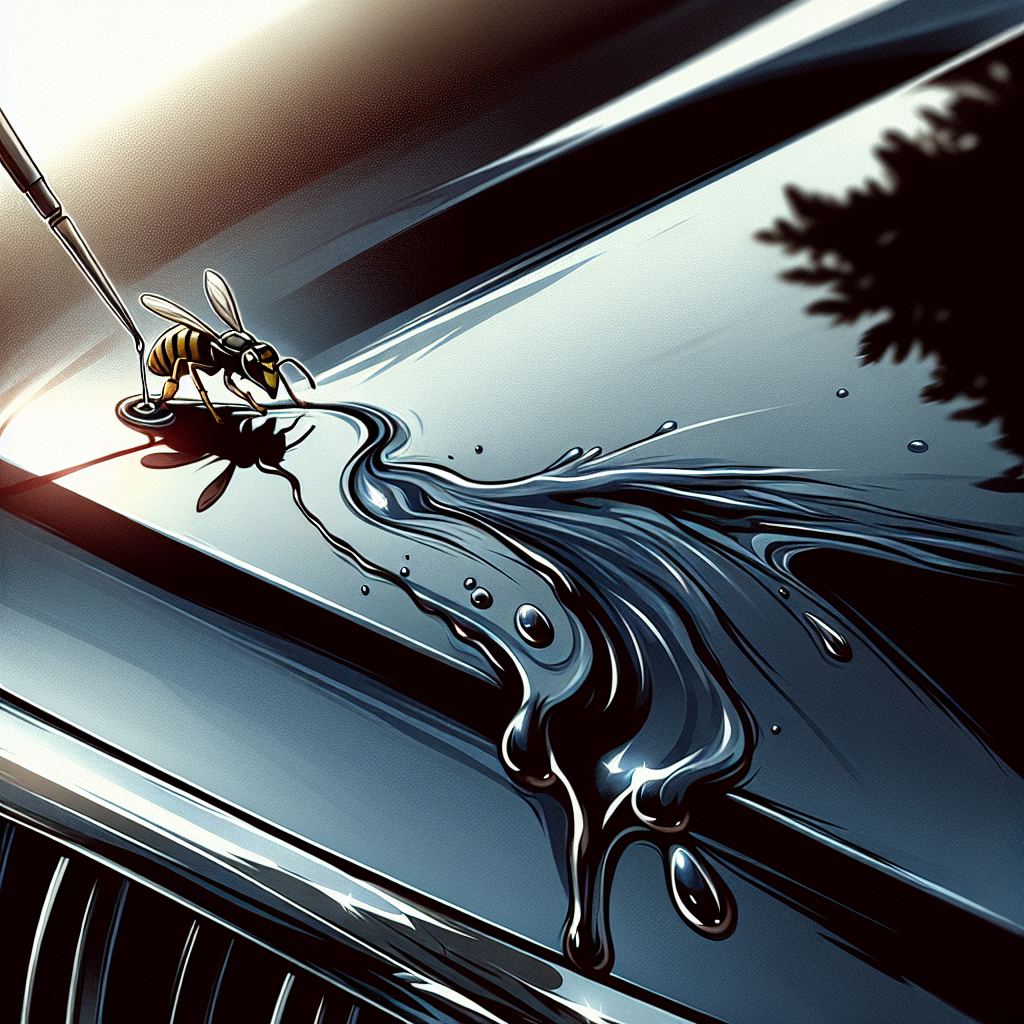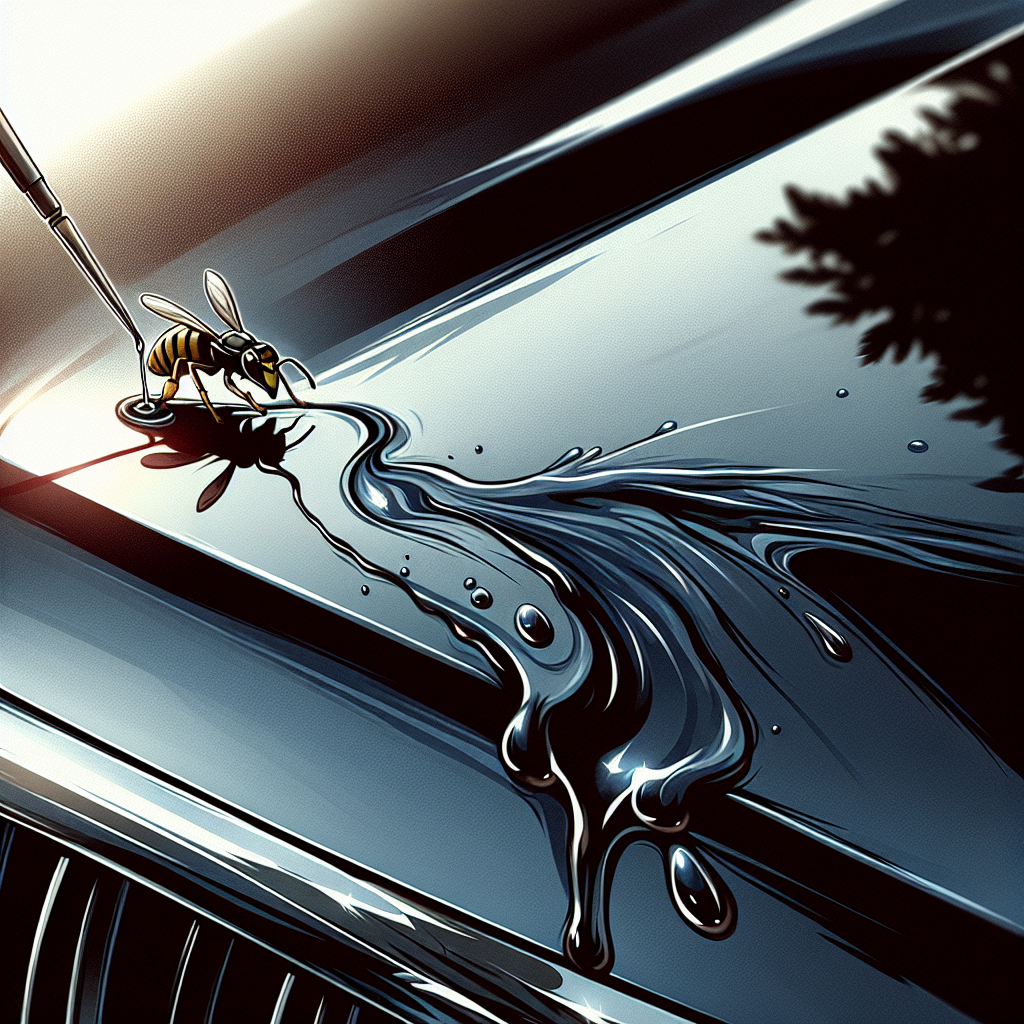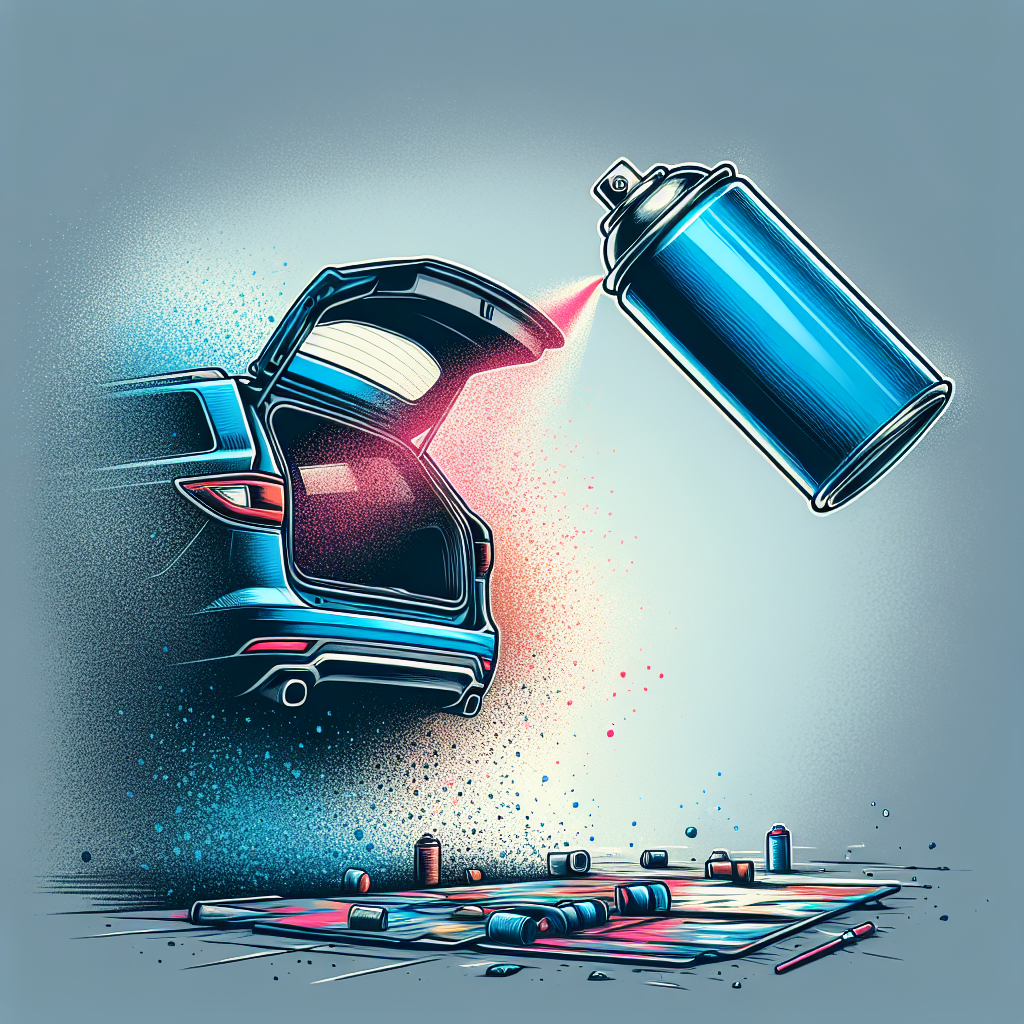In the realm of pest control, wasp sprays are often hailed as effective solutions for eliminating these buzzing insects from your surroundings. However, you may find yourself wondering if using such sprays on or near your car could inadvertently lead to unwanted damage to its paintwork. This article aims to explore the potential effects of wasp spray on car paint, offering insights into the chemical composition of these sprays and the precautions you should take to ensure the preservation of your vehicle’s pristine appearance.

This image is property of images.unsplash.com.
Chemical Composition of Wasp Spray
Wasp spray is a commonly used insecticide that is designed to eliminate wasps and other stinging insects. It typically contains a combination of active ingredients and inert ingredients. The active ingredients in wasp spray are the chemicals that are responsible for killing the insects. These can vary depending on the brand and formulation of the spray. Inert ingredients, on the other hand, are substances that are added to the spray to help with its delivery and effectiveness, but do not have any direct insecticidal properties.
Effects of Wasp Spray on Car Paint
When it comes to car paint, direct contact with wasp spray can potentially cause damage. The severity of the damage depends on various factors, including the duration of exposure, spray distance, and the type and condition of the paint.
Direct Contact with Wasp Spray
Direct contact with wasp spray can lead to chemical reactions between the ingredients in the spray and the chemicals in the paint. This can result in discoloration, fading, staining, or other aesthetic issues. In addition, certain chemicals in the spray can cause the paint to become rough or develop a peeling or chipping texture.
Duration of Exposure
The longer the car paint is exposed to the chemicals in the wasp spray, the greater the potential for damage. Extended exposure can cause the chemicals to penetrate deeper into the paint layers, making it more difficult to remove or repair any damage.
Spray Distance
The distance at which the wasp spray is applied to the car also plays a role in potential damage. Spraying the car from a closer distance increases the concentration of the chemicals, which can intensify their effects on the paint.
Paint Type and Condition
Different types of car paint may have varying levels of resistance to chemical damage. Paints with high resin content tend to be more resistant, while those with low resin content may be more susceptible to damage from wasp spray. Additionally, the condition of the paint, such as its age and level of protection, can also affect its susceptibility to damage.
Factors Affecting Potential Damage
Several factors can affect the potential damage caused by wasp spray on car paint. These factors should be taken into consideration when assessing the likelihood of damage and determining the appropriate preventive measures.
Resin Content in Paint
As mentioned earlier, car paints with higher resin content tend to be more resistant to damage from external factors, including wasp spray. Resin helps provide a protective barrier that can prevent or minimize the effects of chemical reactions.
Clear Coat Protection
Many modern car paints have a clear coat layer that acts as a protective barrier against various elements, including chemicals. A well-maintained and intact clear coat can provide an extra layer of protection against wasp spray damage.
UV Exposure
Prolonged exposure to ultraviolet (UV) rays can degrade the paint’s protective layers and make it more vulnerable to damage. UV exposure combined with the chemicals in wasp spray can accelerate the deterioration process, leading to more significant damage.
Temperature and Weather Conditions
Extreme temperatures and adverse weather conditions can impact the chemical reactions between the spray and the paint. High temperatures can cause the chemicals to become more volatile, potentially increasing the likelihood and severity of damage.
Quality of Wasp Spray
The quality and formulation of the wasp spray itself can also affect the potential for damage. Different brands and products may contain varying levels of active ingredients and inert ingredients. Additionally, some sprays may be formulated to be more gentle on surfaces, including car paint. Using a high-quality wasp spray can help minimize the risk of damage.
Common Issues Caused by Wasp Spray
When car paint comes into contact with wasp spray, several common issues can arise. These issues can significantly impact the appearance and overall condition of the car.
Discoloration
One of the most noticeable effects of wasp spray on car paint is discoloration. This can manifest as spots or patches where the paint appears faded, discolored, or different from the original color. Discoloration can be particularly prominent on lighter-colored paints.
Fading
Extended exposure to wasp spray can cause the paint to fade. Fading occurs when the chemicals in the spray break down the pigments in the paint, resulting in a loss of color intensity. Fading may be more noticeable on dark-colored paints.
Staining
Certain chemicals in the spray can cause stains or marks on the car paint. These stains can be difficult to remove and may require specialized cleaning techniques. Stains can range from light discoloration to more severe marks that are deeply embedded in the paint.
Rough Texture
Wasp spray chemicals can sometimes react with the paint, resulting in a rough texture. This roughness can be felt when touching the affected areas of the car. The rough texture can be particularly problematic as it can trap dirt and make it more challenging to clean the car surface.
Paint Peeling or Chipping
In more severe cases, prolonged exposure to wasp spray can cause paint to peel or chip off. This occurs when the chemicals in the spray break down the adhesion between the paint layers or weaken the paint’s structure. Peeling or chipping can lead to further damage if not addressed promptly.

This image is property of images.unsplash.com.
Preventing Damage from Wasp Spray
Taking preventive measures can help reduce the risk of damage to car paint from wasp spray. By implementing the following practices, car owners can maintain the integrity and appearance of their vehicle’s paint.
Washing the Car Regularly
Regularly washing the car can help remove any potential residue or chemicals from wasp spray. Use a gentle car wash soap that is specifically formulated for automotive paint. Avoid using harsh chemicals or abrasive cleaners that can further damage the paint.
Using Wax or Sealant
Applying wax or sealant to the car’s paint can provide an additional layer of protection against environmental factors, including wasp spray. Wax or sealant acts as a barrier between the paint and external elements, reducing the likelihood of chemical reactions and damage.
Avoiding Excessive Exposure
Avoiding excessive exposure to wasp spray is crucial in preventing damage. If possible, park the car away from areas where wasps are prevalent or take measures to deter wasps from nesting near the vehicle. Additionally, use caution when spraying wasp spray around the car and try to minimize overspray or direct contact.
Covering or Parking in a Garage
Covering the car with a protective car cover can shield it from potential contact with wasp spray. If available, parking the car in a garage provides an extra layer of protection against various environmental factors, including wasp spray.
Using Protective Film or Coating
For added protection, consider applying a protective film or coating to the car’s paint. These products create a physical barrier that can help prevent damage from wasp spray and other external elements. Professional installation is recommended for optimal results.
Immediate Actions after Wasp Spray Contact
If your car comes into contact with wasp spray, there are immediate actions you can take to mitigate any potential damage.
Rinsing the Area with Water
As soon as you notice contact with wasp spray, rinse the affected area with water. Use a hose or bucket to thoroughly flush the area and remove any residual spray. This can help dilute the chemicals and minimize their effects on the paint.
Using Car Wash Soap
Following the water rinse, use a car wash soap to clean the affected area. Gently scrub the surface with a soft sponge or cloth to remove any remaining residue. Avoid using abrasive cleaners or vigorous scrubbing, as this can cause further damage to the paint.
Avoiding Abrasive Cleaners
It is essential to avoid using abrasive cleaners or rough materials on the affected area. These can further scratch or damage the paint, exacerbating the issue caused by the wasp spray.
Inspecting for Damage
After cleaning the affected area, inspect it carefully for any signs of damage. Look for discoloration, fading, staining, rough texture, or any other visible issues. Taking note of the extent and severity of the damage can help determine the appropriate next steps.
Contacting Professionals if Necessary
If you observe significant damage or are unsure about the best course of action, it is recommended to contact professionals such as auto detailing services or paint correction specialists. They can assess the damage, provide expert advice, and recommend the appropriate repair or restoration methods.

This image is property of images.unsplash.com.
DIY Methods to Remove Wasp Spray Residue
In some cases, remnants of wasp spray or minor damage may persist even after immediate actions. The following DIY methods can help remove residue and restore the affected area.
Using Car Wash Soap
Car wash soap can be effective in removing residual wasp spray residue. Apply a small amount of car wash soap to a sponge or cloth and gently scrub the affected area. Rinse thoroughly with water and dry with a clean microfiber cloth.
Clay Bar Treatment
A clay bar can be used to remove stubborn residue or contaminants from the car’s paint. Lubricate the affected area with a clay bar lubricant and gently glide the clay bar over the surface. The clay bar will pick up any remaining residue, leaving the paint smooth and clean.
Polishing and Buffing
For more significant damage or persistent residue, polishing and buffing may be necessary. This process helps remove light scratches, swirl marks, and residue from the paint’s surface. Use a suitable polish and a polishing machine to restore the affected area. It is recommended to seek professional advice or assistance for optimal results.
Spot Cleaning Techniques
If the damage is localized to specific spots, spot cleaning techniques can be employed. This involves targeted cleaning and treatment of the affected areas using specialized products. Follow the instructions provided by the product manufacturer and proceed with caution to avoid further damage to the paint.
Seeking Professional Help
If the damage caused by wasp spray is extensive or beyond your comfort level, seeking professional help is advisable. Various automotive experts can assist in assessing and addressing the damage.
Auto Detailing Services
Auto detailing services specialize in cleaning, restoring, and protecting car exteriors and interiors. They have the expertise and tools to effectively remove residue, correct paint imperfections, and restore the overall appearance of the vehicle.
Paint Correction Specialists
Paint correction specialists are professionals skilled in repairing and restoring damaged car paint. They have the knowledge and techniques to address more severe issues, such as scratches, fading, or peeling caused by wasp spray or other factors. Paint correction may involve multiple steps, including polishing, compounding, and applying protective coatings.
Repainting or Touching Up
In extreme cases where the damage cannot be adequately repaired, repainting or touching up the affected areas may be necessary. Professional painters can match the original color and seamlessly blend the new paint with the existing paintwork, ensuring a seamless finish.

Legal and Safety Considerations
When using any pest control product, including wasp spray, it is essential to consider legal and safety aspects.
Importance of Reading Product Labels
Before using any spray, carefully read the product label and follow the instructions provided by the manufacturer. Adhering to the specified guidelines can help ensure proper and safe usage.
Using Wasp Spray Responsibly
Use wasp spray responsibly and only for its intended purpose. Avoid excessive or unnecessary spraying that may lead to overspray or contact with car paint. Pay attention to wind conditions and take appropriate measures to prevent unintended exposure to surfaces.
Adhering to Environmental Regulations
Dispose of empty wasp spray containers and any other packaging materials according to local regulations. Adhering to proper disposal practices helps protect the environment.
Proper Disposal of Empty Containers
Empty wasp spray containers should be handled with care and should not be thrown in regular trash bins. Contact your local waste management facility or refer to local guidelines for proper disposal instructions.
Conclusion
While wasp spray can potentially damage car paint, taking preventive measures and immediate actions can help minimize the risk and mitigate any damage that does occur. Regularly washing the car, using protective measures, and avoiding excessive exposure to wasp spray are effective ways to protect car paint. In case of any damage, seeking professional assistance or using appropriate DIY methods can help restore the affected areas. It is important to handle wasp spray responsibly, read product labels, and dispose of empty containers properly. By considering these factors and following recommended practices, car owners can maintain the beauty and integrity of their vehicle’s paint despite the potential risks associated with wasp spray.




